The Apple iPad Pro Review
by Ryan Smith, Joshua Ho & Brandon Chester on January 22, 2016 8:10 AM ESTFinal Words
Overall, the iPad Pro has proven to be a very different experience for me than previous iPads. The design is definitely familiar, with the same industrial design and general feel as previous iPads scaled up to a 12.9” form factor. However, the change in size is something that feels like it should have been done from the start. Of course, there are people that will carry tablets in cargo pockets that want something closer to a 7” display and people that carry tablets in purses that want a ~10” display, but if you’re like me and the only way you can realistically carry a tablet is in a backpack then the 12.9” size makes far more sense.
It’s also noteworthy that despite this increased size I didn’t really notice that it had gotten significantly harder to handle in the hands than an iPad Air 2. This is likely helped by avoiding placing heavy batteries at the edges of the tablet, which reduces the moment of inertia and associated hand or arm strain from holding the tablet for hours on end. This is especially important when considering the Apple Pencil which makes it pretty natural to hold the tablet with one hand and draw with the other for hours on end.
On the SoC side, we’re finally seeing a major player in ARM SoCs directly competing with Intel on their home ground of sorts, and the results are at least somewhat shocking. Despite a handicap on process node, the CPU of the A9X isn’t all that far off from Skylake Core M. And while A9X can't go toe-to-toe, Apple is for the first time capable of reaching Intel's level for some workloads. Otherwise on the GPU side, Apple arguably bests Intel. While iOS vs. Windows doesn't lend itself to as precise comparisons as we'd like due to some fundamental architectural differences, for a developer writing a GPU-accelerated application tailored for the platform the A9X’s 12 Cluster Series7XT GPU is capable of doing more than the Core M’s Intel HD 515.
Ultimately Apple's Twister CPU core is now the “new normal” for Apple devices, so I’m not nearly as blown away as I was with the iPhone 6s, but I really do have to emphasize that this SoC is incredibly fast. Currently, it has no real competition in the ARM SoC space, and I suspect it won’t for quite some time even in light of new SoCs on the horizon like the Exynos 8890 and Snapdragon 820, as the SoC is tailored for tablet use rather than a smartphone SoC with more thermal headroom. When combined with the Apple SSD present in this device, it’s hard to complain about performance for the most part.
This strong showing in SoC performance, combined with a noticeable amount of work on the display results in a relatively impressive level of battery life. While it isn’t really better than the iPad Air 2 here, the sheer efficiency of the hardware in the iPad Pro means that the battery is smaller on a relative basis despite the large difference in display size. It’s easy to fixate on battery size as the sole determinant of battery life, but that ignores half the equation. The one notable area where efficiency isn’t as good as one might hope is LTE battery life, but I suspect that the impact here isn’t going to be as noticeable as it is with a smartphone as even with our LTE variant I spent most of my time using WiFi to get work done.
From an internal hardware perspective the one real issue here is the rate at which the iPad Pro charges, which is starting to approach unacceptable levels. Future iterations of iPad Pro really need to ship with a much more powerful charger. Even 4 hours to charge is pretty excessive compared to the 3 hours or so that it takes most laptops to charge or the 2 hours that it takes for a phone to charge.
On the display side, Apple continues to ship some of the best displays I’ve seen in the industry. The iPad Pro is no exception, with a relatively bright panel combined with an incredibly good anti-reflective coating to basically eliminate the disadvantages that come with glossy displays. The move to a new display technology also makes for some truly impressive contrast figures for an LCD, although it’s not a competitor to OLED if you only focus on contrast. As an aside, I suspect microLED or OLED is going to have to take the place of traditional LCDs at some point, as OLED is probably going to be unambiguously superior to even the best LCD by the end of this year if the trajectory of improvement continues.
But LCD or not, the iPad Pro’s display also has incredibly good color calibration. Apple does tend to prefer slightly blue white balance, but I suspect this is mostly a trade-off between color accuracy and power efficiency. For color-critical work in areas like medical and creative industries I suspect that the iPad Pro is sufficient due to its relatively low color shift with changes in viewing angles. It’s also interesting to see that there is clearly evidence of Apple’s custom DisplayPort timing controller (TCON) within the system files, but we basically have to take Apple at their word that this TCON is dynamically switching between 60 and 30 Hz refresh rates as I really couldn’t tell that this was happening in practice, or within system files.
While the basics are critical, the iPad Pro earns its “Pro” moniker on the basis of its accessories, the Apple Pencil and Smart Keyboard. The Apple Pencil is unquestionably the best stylus I’ve ever used in any mobile device. I would argue that the Apple Pencil combined with the iPad Pro is probably the single greatest threat to Wacom’s dominance in the professional market today. We can spend all day arguing about how Apple Pencil has no buttons and has an odd charging method, but for $900 USD you can either buy a Wacom Cintiq 13HD Touch or an iPad Pro with Apple Pencil. If the right apps are available on the iPad Pro, it’s pretty much indisputable that the iPad Pro is going to be a better, more elegant solution for getting stylus-related work done.
Outside of creative work, the Apple Pencil is shockingly good as a pencil/pen and paper replacement. Even with the default Notes app I felt like the iPad Pro is far and away superior to carrying around a folder, notebook paper, pencils, pens, erasers, straight edges, and textbooks. I’ve always been looking for a tablet that could be seriously used for academic work, and the iPad Pro is pretty much what I’ve always been looking for. The Surface Pro 4 comes close to be sure, but I would argue that it really isn’t a proper tablet by virtue of how dependent it is on trackpad input. The stylus also just not as well-implemented as the iPad Pro, which is evident as soon as you try to do perfectly straight diagonal lines. In addition to education contexts, I wouldn’t be surprised to see Apple Pencil take off in areas like point of sale registers. While 3D Touch is great, the Apple Pencil managed to surprise me even more. However, the applications of Apple Pencil are somewhat limited to these specific cases compared to the more universal applications of 3D Touch.
The Smart Keyboard by comparison is a bit of a letdown. While I like using the keyboard a lot when I can set it up on a table or something and do nothing but type out paragraph after paragraph, the trouble is that as soon as some other UI interaction is needed the user experience kind of falls apart. Both setting up and taking down the keyboard takes some time, and doing the motions/origami necessary to do this is not something that can be done carelessly as the Smart Keyboard can and will fall apart/behave unpredictably if you don’t put it together properly. In order to really hit it out of the park, the Smart Keyboard needs to be more stable in the lap, have at least one more useful angle, and be much faster to set up/take down. In essence, the hope is to be able to rival a touch keyboard for bring-up/take-down, but introduce the ability to touch type at speeds that touch keyboards realistically cannot hope to rival. I don’t really think it’s reasonable to argue that the iPad Pro with the keyboard set up is an ideal experience for UI navigation, as using the touch screen is about as ergonomic as a touch screen laptop and using the keyboard for navigation only feels an awful lot like using a command line interface.
In fairness to Apple though, the Smart Keyboard is arguably the right direction for tablets to take. We can talk about how the Surface Pro implementation is better, but I’m still not a big fan of using a trackpad on a “tablet,” and pecking at a display with my finger is arguably even worse. The kickstand also has a lot of issues with lap stability as well, although it does resolve some of the concerns with getting the right angle for proper visibility of the display. The problem of text input on a “pro” tablet is one that needs new solutions, and other than the iPad Pro and Pixel C I honestly haven’t seen anything that comes close to getting in the right direction.
On the software side of things, the iPad Pro continues to be one of the few (if not only) tablets that has an OS and UI that is properly designed for a mobile tablet. Microsoft is doing an admirable effort here with Windows 10, but the sheer difficulties that I have with something as simple as high DPI scaling in Windows is just unacceptable for a tablet. It’s also difficult to deal with the sheer number of legacy applications out there, which really complicates control schemes. I found the vast majority of the time I ended up having to use a stylus or trackpad for simple UI interactions because the touch targets were just too small otherwise. Android has some pretty severe issues with making a tablet UI that is more than just a scaled-up phone UI, which leaves the iPad Pro as more or less the only game in town. There are some issues that stem from the lack of ability for apps to really interface with each other and the difficulty of abstracting away the file system, but for the most part I found iOS to be quite good for getting work done.
However, iOS is not a perfect tablet OS. One real problem here is that the multi-window UI isn’t quite as good as it needs to be. While the current list of apps that fully support this functionality isn’t unmanageable, as time goes on I suspect it will get to be rather annoying to scroll through a long list of apps. There’s also the issue of performance. While there was a time when iOS was just incredibly smooth all the time, I’m starting to notice a trend of apps and general UI tasks that show rather concerning levels of frame drops. I’m not really sure exactly when this happened, but something as simple as scrolling through the Notes app shows frame drops on par with scrolling through Google’s Play Store app. This is definitely an area where Apple should focus on improving, as performance problems shouldn't be a concern with a tablet that's as powerful as the iPad Pro.
While the camera is arguably quite low on the list of priorities for a tablet, Apple manages to deliver one of the best cameras in a tablet today. I honestly wouldn’t advise using it as an actual camera, but as a last resort it works quite well. The speakers are also hugely impressive for multimedia use, and probably beat everything else I’ve ever tried on a mobile device, although this is based upon subjective observation. I found that watching YouTube and movies on this tablet is great when paired with the speakers. People that only use headphones for audio might find this feature pointless, but if you’re sitting in bed or in your room watching a movie it’s definitely convenient to not have to put in headphones while getting acceptable audio quality.
Overall, the iPad Pro is an incredibly good tablet. I’ve always liked the idea of a tablet, but for the most part I’ve been deeply dissatisfied with the implementations of tablets. With the iPad Air 2 review I really emphasized how a proper keyboard and a good stylus would really make the user experience much more compelling, and with the iPad Pro we’re finally starting to see movement towards the tablet that I’ve always wanted. The iPad Pro is arguably the first tablet that I personally want to even consider buying. It isn’t perfect by any means, and there is still a lot of work to be done - seemingly fitting for a first-generation Apple device - but for the first time in a long time it feels like the broader tablet market is advancing once again. If you want a proper tablet that can replace pencil and paper with a keyboard for extended typing sessions, I have no problem recommending the iPad Pro. If you're hoping for a laptop that can also double as a tablet, I suspect that the Surface Pro 4 will remain the right choice for you.


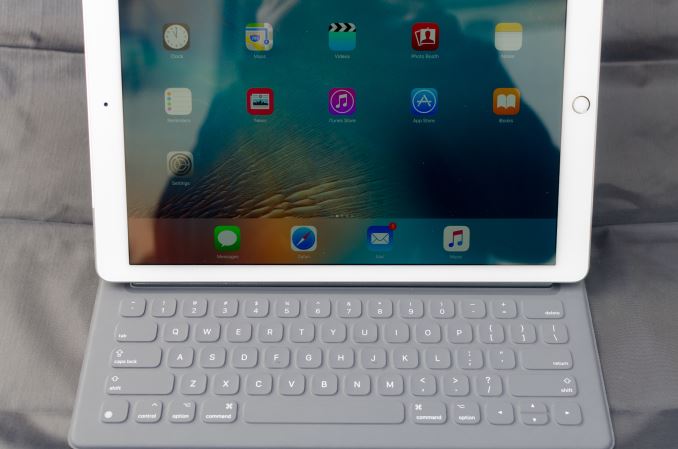
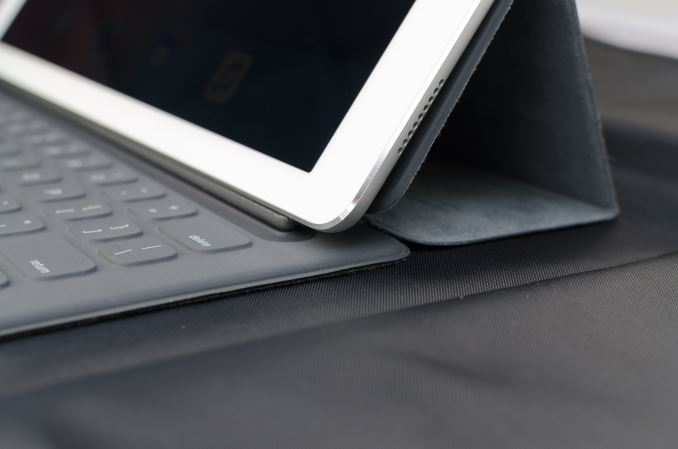

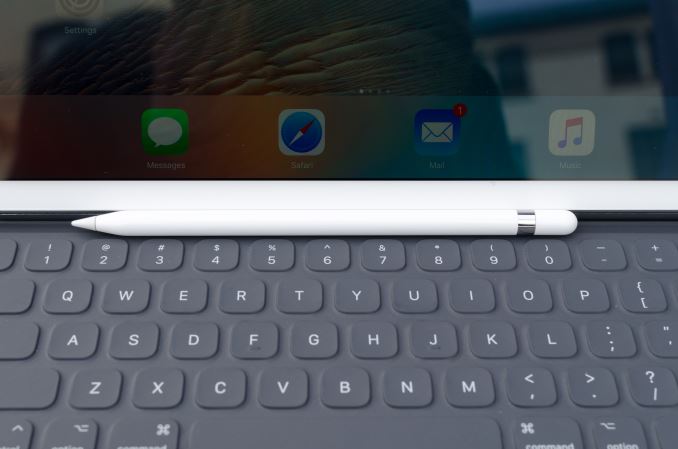
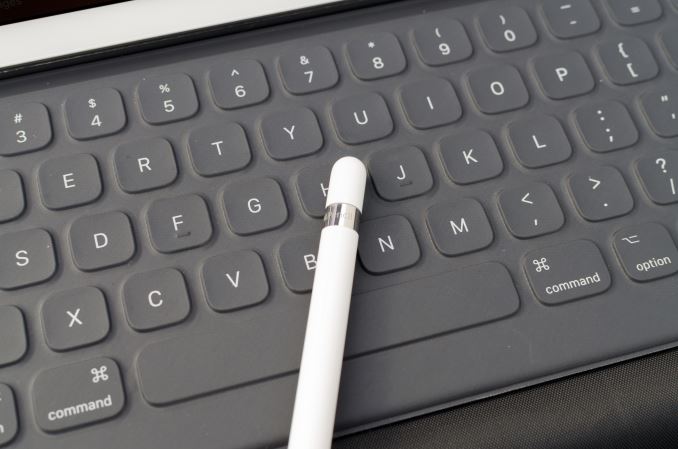

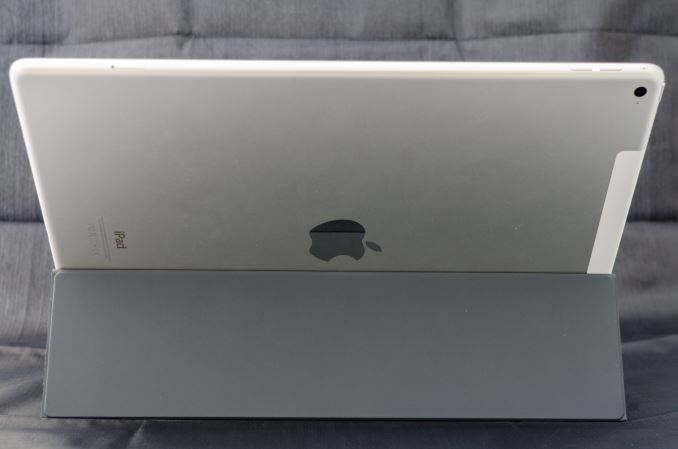
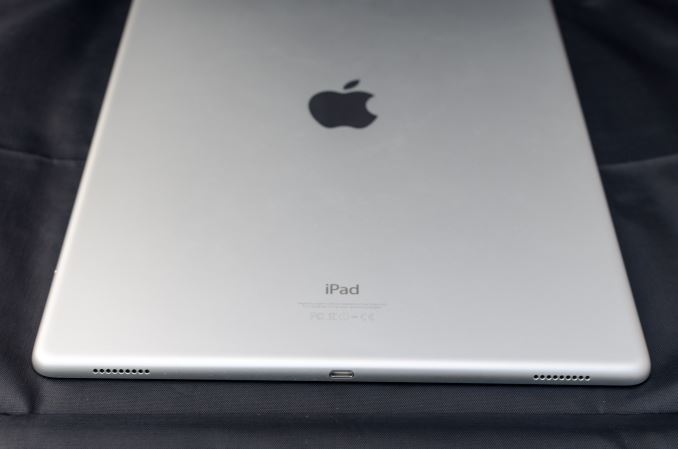
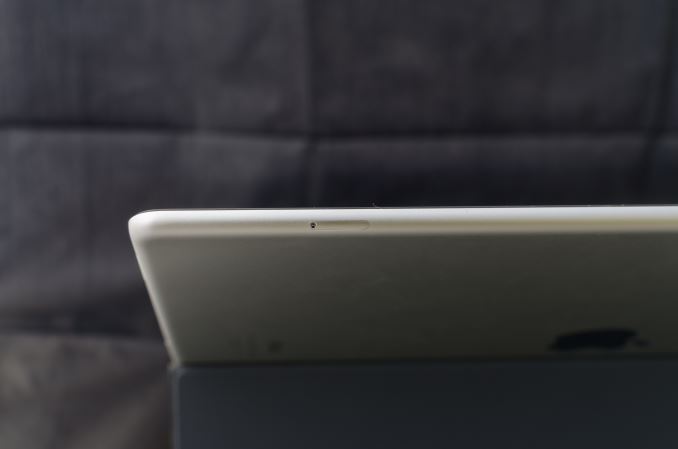
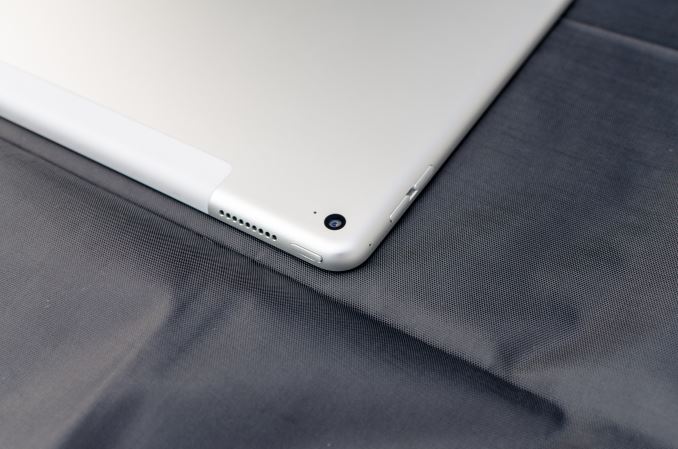
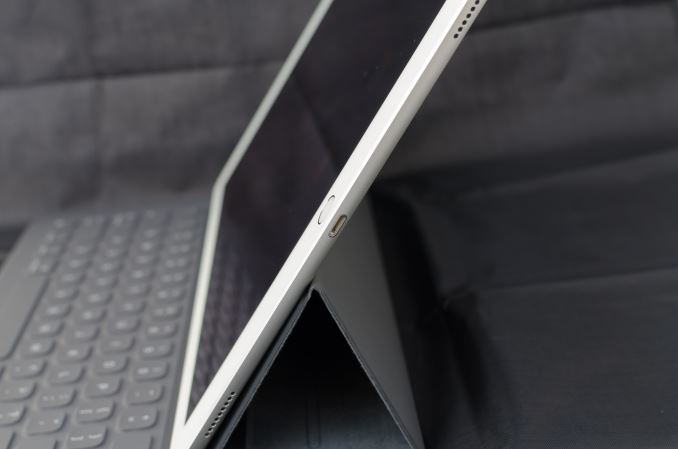








408 Comments
View All Comments
ddriver - Saturday, January 23, 2016 - link
So in your expert opinion, all programs do is syscalls? No application logic, no application data? LOLAlso, API calls are NOT syscalls. Syscalls are requests to OS kernel, API calls are just regular calls to a library. Fundamentally different things.
FunBunny2 - Saturday, January 23, 2016 - link
-- Fundamentally different things.exactly the same: your not writing active code, but calling out to somebody else's code to do the work. in neither case does it matter what you're source language is, from a performance point of view. there's a reason that java mostly beats C++ these days.
Constructor - Saturday, January 23, 2016 - link
The main reason for that is the "well, it's fast enough, and if not we'll compensate with CPU upgrades" mentality in many projects.gistya - Sunday, January 24, 2016 - link
Why are we talking about Java and C++ here? Just curious.I recently worked on Google's j2objc project and it's pretty freaking slick. You can translate Java code into Objective C that compiles and runs pretty flawlesly on an iOS device, and it's fast. It's not emulated, it's actually a port of Android's core libs right into Objective C. Amazing work.
I started working with Swift recently and it's pretty cool itself. Apple's answer to C# and Java, basically. I like that they released it free and open source for Linux. It's weird to program in until you get used to the weird memory management stuff but, hey, code runs so much faster without garbage collection.
ddriver - Sunday, January 24, 2016 - link
Objective C is an atrocity. Moving away from it in favor of swift is one of the few moves apple can be commended for.Apple have taken advantage of native code, which has resulted in better user experience than android, even when their hardware was mediocre. Because native code is way better than java.
Relic74 - Saturday, February 27, 2016 - link
Developing apps that take advantage of the iPad Pro's hardware is just the tip of the iceberg. iOS needs a complete overhaul as in it's current state it's lacking just to many features to be considered anything approaching a Pro OS.The iPad Pro is my first iOS device, I've played with them over them years but I never really liked iOS, it just always felt extremely restrictive to me. When the Pro came out with iOS 9.2 I was intrigued and started to read up on it, the reviews were solid and everyone I talked to who owned one, really liked them. So I made the plunge and bought one for myself. Now I already have a tablet, the new Pixel C in which I really like, even though the reviews on that haven't been so super. The biggest complaint was that Android isn't really a productivity OS. I found it to be quite the opposite, it's an extremely capable machine. So when I read that the iPad Pro is pretty decent on productivity tasks, I thought well if they thought the Pixel C wasn't up for the task and it is, than the iPad Pro must be something special.
It's not, every reason why I avoided iOS all of these years is still present in the latest version, every single one. As I use CodeEnvy, a cloud based IDE to do most of my programming, I assumed the iPad Pro would be able to handle to handle my work flow. It's nothing outrageous what I'm doing or expect, simply using the CodeEnvy app, Prompt 2 (a terminal app) and Chrome. I also needed Excel to calculate trade PNL's. Within the first hour of using the iPad Pro it was more than apparent that it just wasn't meant for productivity work or at least nothing on the level that I required and didn't come lose to the Pixel C's abilities.
First, I needed to run the terminal app in the background, compiling apps can take a while, plus I run scripts and monitoring applications. However after 3 minutes iOS would terminate it's connections. After some research it seems only about 1% of the apps in the App Store can actually run in the background for extended periods of time, mostly GPS and music apps. Than their was the problem with app resolutions, more than 80% of them I had installed didn't support the iPad Pro's resolution. So again after some research it seems only about 10% of the apps available actually support it's resolution, these unsupported apps also use another keyboard, one that is extremely basic and missing many of the features of the systems default. Now, app developers are working on this problem but the real problem, which is that apps in iOS are resolution independent in the first place just isn't a good idea. However it seems that their is no other way to do it because of this so called Walled Garden Paradigm.
Apps in iOS are basically islands and in some weird way are even like OS's themselves, they basically have to fend for themselves With little contact to actual system except through hacks, okay, API's but it sure sounds like a hack to me. So every time a new feature is added to iOS app developers have to manually update their code to support it. Which brings me to the next issue, dual app view, only about 120 apps or so support it, again, we have to wait for the app developers. Now I'm not saying Android is the better option for any of you, it's all about preferences but when I enabled the dual app view feature in Android 6.0, every app from that moment on supported it. Further, every app I have installed into my Pixel C supported it's resolutions. When I connect a monitor to it, everything is supported, resolution, aspect ratio, I can even change the DPI to make it look more like a proper desktop UI and it supports extending the desktop, not just mirroring. Since the Pixel C has a USB C, I'm using the same port-replicator I bought for my MacBook 12" which has, HDMI, SD Card reader, 2 USB 3, mini USB and Ethernet, connecting a display to the Pixel C couldn't be easier. When I connected my monitor to the iPad Pro it looked like complete crap, black bars, the DPI was so large it looked like a child's toy and it just supported mirroring which absolutely sucks because you can't have two monitors.
File system or should I say lack of because except for iCloud, iOS doesn't have one, it depends on it's apps to manage them. This is absolutely ridiculous and frankly Apple should be ashamed of themselves for leaving it this way for the last 8 years. Dealing with files in iOS is a complete nightmare. Every time I grab a file from the cloud I end up creating at least 4 copies of the same files because when you send a file to an app, it sends a copy, leaving the original in the app your sharing from. So keeping track of which file is the latest version is impossible. Why am I sharing in the first place, on every single mobile device I've ever used, the sharing feature was used to send content to an online source, never was it used as a method to manage files, especially not as the primary method. Also I have yet to have seen an app that can Share to every compatible app installed, their always missing apps in the share list, why because unlike Android which creates it's Share lists dynamically on a system level, the app developers for iOS apps have to manually create a Share profile, which means apps can pick and choose which apps they want to support. When you install the DropBox client, every app that can create a file from that time on should be able to Share to it, period. Instead we have to wait for the app developers for everything in iOS. People say that Android is fragmented, fine but so is iOS, except in it's case, it's the apps that are fragmented. Anytime a new feature is added, every app should automatically be able to do it because the system manages it, not the apps.
The keyboard, I first bought the Apple keyboard, however I really didn't like the way it felt to type on, I missed having the function keys and the biggest issue, no backlite, something I simply cannot live with out as I type at night in bed a lot. It also doesn't provide any protection so I had to buy the hard case, 200 bucks + for a mediocre keyboard. So I bought the Logitech, a much, much better typing experience however there is one problem that became hugely apparent while using it. I wanted a mouse, not every time, just when the keyboard was connected. Why, well like Tim Cook said about notebooks with touchscreen's being a failed idea mostly do to poor ergonomics, the user has to constantly reach up to navigate the UI (get's old real quick), the iPad Pro, ironically, falls under the same category. Foot in mouth next time Tim, I'm sure you didn't realize at the moment that you were also talking about the iPad Pro but it's the same exact thing.
The Pencil, I'm not an artist so I can't really say if it's good or not. The one thing I do know is that I can't use it throughout the system. Something I desperately wanted to do, so in the drawer it went, instead I use a Wacom, has pressure sensitivity, palm rejection and writes great, no lag. In fact I can't tell the difference between the two when using apps like EverNote, Bamboo Paper, OneNote, etc. the iPad Pro is a finger print magnet, I just wanted a stylus to navigate the UI with, also without a mouse the Wacom is the closest thing I can get, works a lot better with it than without when using the keyboard, that's for sure. Is there an actual Apple device available without compromises, there is absolute zero excuse for not allowing the Pencil to function throughout the system. This idea that the iPad Pro is a touch device only completely fell apart the second Apple made the Pencil and keyboard, two accessories that break this touch only paradigm. The only reason why Apple is doing this is to save a little face from all these years of saying the stylus is garbage. This is also why I'm pissed that Pro doesn't have mouse support. The OS certainly supports it by the way, my brother has an iPad Air 2 which is JailBroken and he installed mouse drivers just fine, works great.
There is potential here, however even with great apps the blatant problems in iOS prohibit it from ever becoming a proper productivity tool. Now I fully realize that there are plenty of people that get by just fine with using the iPad Pro, I'm just not one of them. The Pixel C is a much more capable machine for what I do, I have every app that I need which by the way are the same exact apps I had installed on the iPad Pro so I don't get this, no apps for Android tablets thing, I have over 60 apps, all of them look and perform great. In fact, they actually look better on the Pixel C because they all support it's resolution. I have a stylus, the same Wacom. I use for the iPad Pro. I have an actual file-manager with all of my files in a single area, organized by folders. I can access my firms secure NAS drive using Open ID, I have all of my cloud storage, other computers, external HD's and FTP servers mounted as local assets, so when I click on save, the file is saved directly on whichever remote storage I choose. None of that, click on Share BS. When I'm editing a file and need to use more than one app, each app uses the same exact file, no creation of multiple files from Sharing, just open, edit, save, go to other app, open, edit, save. I can find any file in less than a minute, I can find every file that contains a persons name inside of the files In less than a minute. I tried to do this in iOS, I just gave up, finding files in iOS is like trying to find Noah's Ark in Turkey. Zipping and sending files in iOS, well, just also sucks, hopefully the files your sending aren't located in more than 2 apps. I use the Pixel C as a desktop computer as it has mouse support and looks great when connect to a monitor with extending desktop capabilities. Since I can run Linux desktop applications and quickly mind you, it actually makes for a decent desktop machine, however I just purchased an Nvidia Shield TV, installed Arch Linux on it and am now using that as my desktop computer. The performance of the Pixel C was so good when running Linux apps that the Shield TV was a no brainier. Yes, there are GPU drivers for it, in fact my CUDA applications work great on it. I can encode a video file using the GPU to compute faster than most laptops using their CPU's.
Write now I am compiling an app in the background, while downloading a 20GB .rar file to a connected HD, while streaming a movie directly from OneDrive without having to download it first, to my sons TV in his room, I have Gimp running on my monitor as I was editing a picture, (I'm running Arch Linux in a Chroot under Android, to use applications I just start them up through an X-Terminal, works great), while I'm typing this up in Chrome on the Pixel C itself. The iPad Pro doesn't come close to that level of multitasking, running two apps in a split screen view is a nice feature however I would give it up in heart beat to be able to run any and all apps in the background.
I'll end it here, the iPad Pro is still just an iPad, it's not a laptop replacement, it's not a productivity machine, it's an iPad. A content consumption device, just with a larger display. Those wanting one, wait, at least until version 2 comes out. There are just tom any issues that need to be worked out and most importantly, no apps that really take advantage of it.
boozed - Friday, January 22, 2016 - link
MaxiPad, surely.definitelyReal - Friday, January 22, 2016 - link
Lolxerandin - Saturday, January 23, 2016 - link
You win this comments section. Not really worth much, but it's better than the guys in here defending a product that has left most of everyone everywhere completely nonplussed.Constructor - Saturday, January 23, 2016 - link
Ideologue, much?I've simply bought it because I wanted to use it, and I do. Every single day. And it is fantastic.
If you're "nonplussed" by it, you're likely asking the wrong questions to begin with.